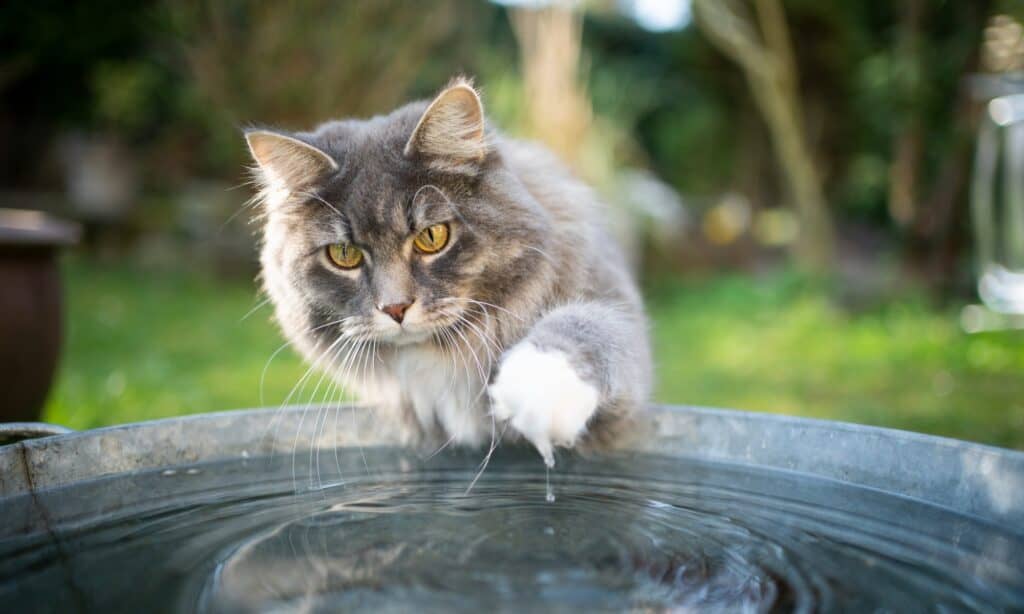That was fast! See below to watch the full video of the lightning-fast reflexes of this cat as it bats an attacking snake away.
Watch the Incredible Footage Below
How Fast Are Snake Strikes?

Cats are both scared of and fascinated by snakes.
©MorphoBio/Shutterstock.com
Snakes have evolved to have super-fast strikes. A snake will bite either to catch prey or for defense. When catching prey, it needs to be able to strike faster than the prey can get away. If it strikes for defense, it needs to be faster than whatever is attacking it!
Some snakes are venomous – they deliver a toxic venom into the skin when they bite. Others just hurt!
Research has shown that both venomous and non-venomous snakes can actually strike faster than mammals can react – whether they are predators or prey. The study showed that snakes can accelerate at over 160 meters per second squared (ms−2).
The snakes reach speeds of nearly three meters per second. If the predator/prey is between 13.6 to 16.7 centimeters away from them, it will take the snake’s mouth just 66 to 74 milliseconds to reach them! This is up to ten times faster than a jackrabbit can move to escape! Of course, some snakes are faster than others but they are all pretty speedy!
In comparison, some tests on cat reaction time have shown that they can withdraw their paw in just 250 to 500 msec but reaction speed time will probably vary with the cat and with the stimulus.
How Large Do House Cats Get?

Maine Coons are the largest breed of domestic cats.
©iStock.com/Nils Jacobi
The typical male cat tends to be larger than their female counterparts. A fully matured cat can have a weight ranging between 6 to 25 pounds and a length spanning from 13 to 40 inches from nose to tail.
Generally, a cat’s size is dictated by its genetic makeup: the typical domestic cat weighs approximately six to twelve pounds and measures around 18 inches in length and 10 inches in height.
Further, the largest house cat breed is the Maine Coon with males weighing up to about 18 pounds!
Snake Bites in Cats and Dogs

Dogs are more likely to suffer a snake bite than cats.
©Warut Chinsai/Shutterstock.com
Snake bites in cats are not as common as they are in dogs. This may be because cats do not go crashing through the undergrowth in the same way as dogs. It may also be because they have faster reflexes – as we see in this clip. However, cats also hide away after an injury whereas dogs are more likely to go howling to their owner. Cats are actually more resistant to snake venom but they have smaller bodies.
Our feline friends can be both fascinated by and terrified of snakes – sometimes at the same time!
Not all snake bites are venomous. However, the venomous snake bites in cats in the US are nearly always caused by pit vipers such as rattlesnakes, copperheads, and cottonmouth water moccasins.
Cats are more likely to bat at snakes as we see in this clip. This results in more bites on the front paws and limbs. Dogs are more likely to sniff around the snake and are therefore more likely to get bitten on the face!
Thank you for reading! Have some feedback for us? Contact the AZ Animals editorial team.








